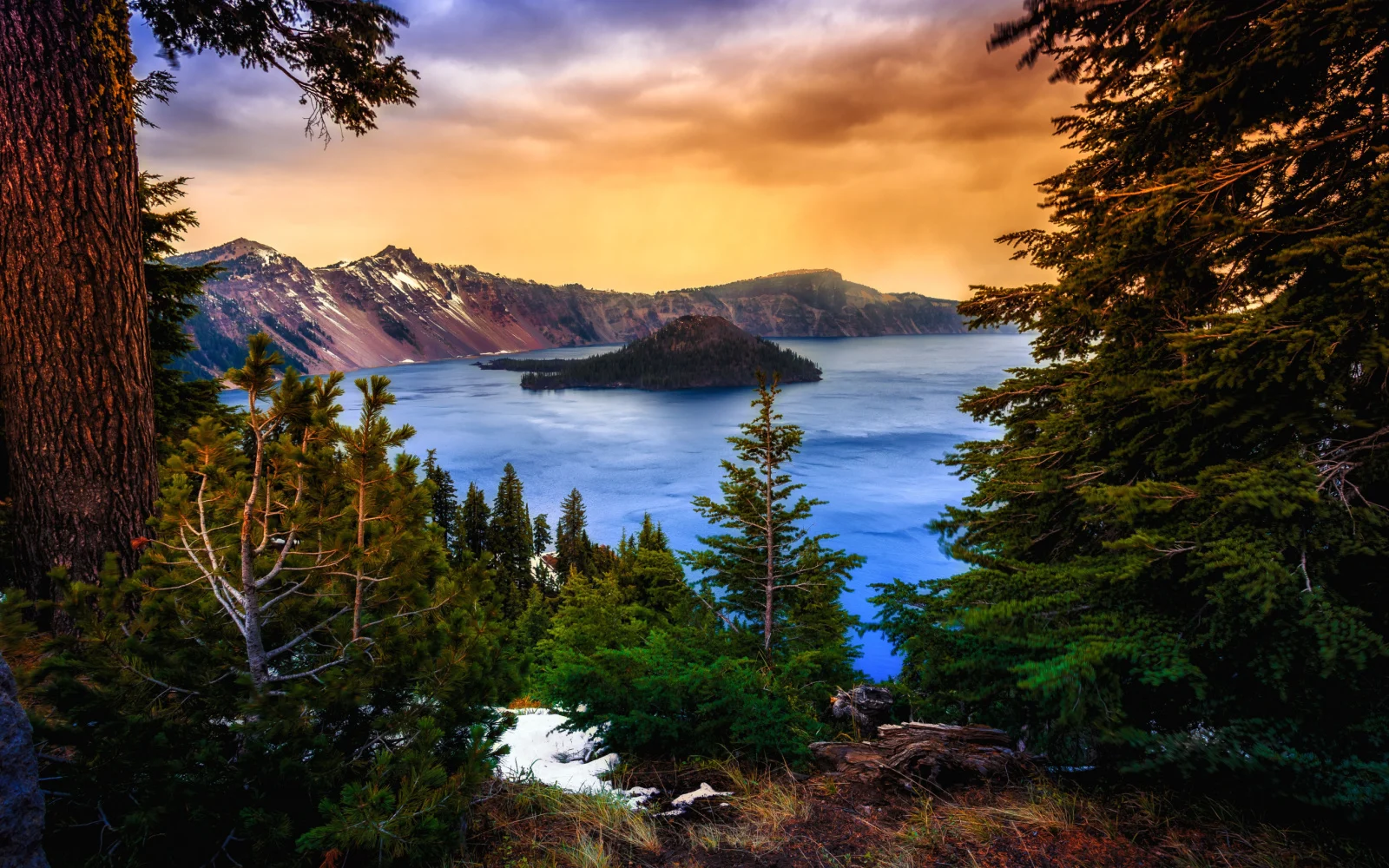What's the best time to visit Crater Lake?
The best time to visit Crater Lake is from July to September when the weather is warm and all trails and facilities are open. Situated at a high elevation, the park experiences harsh winters, making summer the only time for full access and activities like hiking and scenic drives. However, while it’s a great time to visit, expect summer to be busy since it’s the only season when the park is fully operational.
Crater Lake in Oregon is one of the oldest national parks in the United States and a must-visit destination for lovers of nature. The placid waters of the lake hide a violent geological past—the lake was formed after the violent eruption of Mount Mazama collapsed the top of the mountain.
That means that besides the waters of the deepest lake in North America, visitors can explore unique geological formations and cliffs. From hiking to cross-country skiing, you can do a range of outdoor activities here.
You want the weather to be good and the visibility to be pristine when you head to Crater Lake, which is why picking the right time to visit is so crucial. We’ll show you this and more below; let us be your guide!
Overall Best Time to Visit Crater Lake
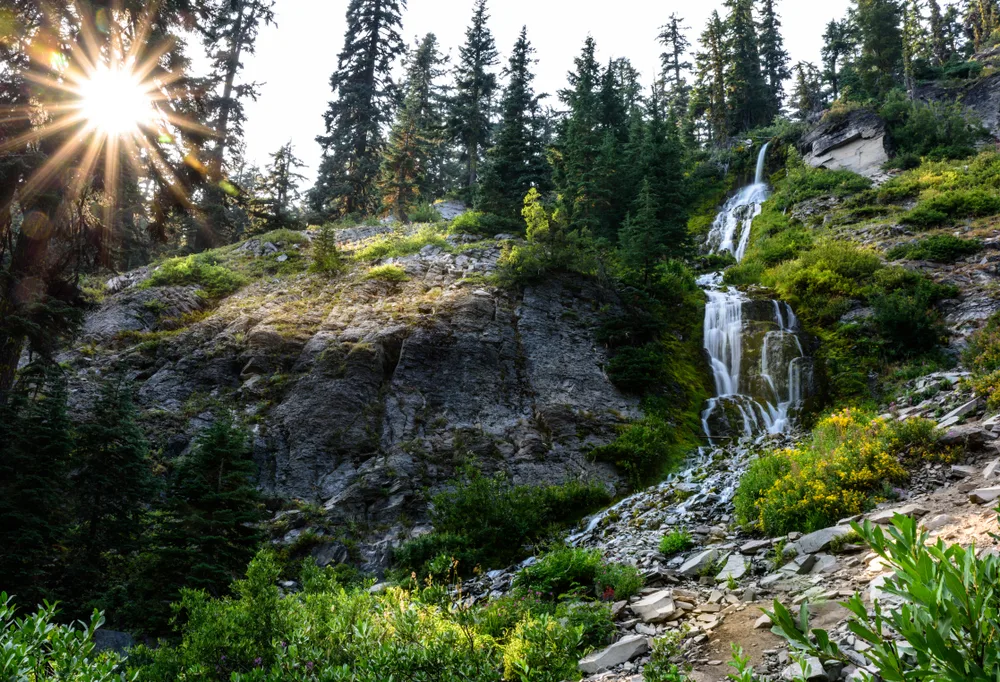
Alexey Ulashchick/Shutterstock
The best time to visit Crater Lake is during the summer, from July to September, when you have a brief window of time when the weather is warm and pleasant for hiking. Even the official Oregon tourism board recommends visiting Crater Lake in the summer.
The lake is located at a very high elevation. The rim is at 7,000-8,000 feet, while the highest point, Mount Scott, reaches heights of 8,929 feet. The high elevation means that weather conditions can get extreme.
Winter lasts from November to early May, with cold temperatures and plenty of snow. The snow doesn’t fully thaw until July! The summers are short, but warm.
Average high temperatures in July and August are about 69 degrees Fahrenheit, a welcome break from the freezing cold that covers the national park for the rest of the year. The landscape is glorious during this brief time.
The lack of snow allows you to see the beauty of the canyons and forests that surround the lake. Since the weather is so harsh, wildflowers don’t bloom until the summer. Visit in July and you’ll still see some gorgeous blooms.
The weather in the summer is much better for outdoor adventures, such as:
- Scenic road trips
- Hiking
- Camping
- Fishing
- Birding
Summer is the only window of time when you are guaranteed to find all trails and paths passable. The most popular thing to do in Crater Lake is to go on the scenic Rim Drive, the best way to see the lake.
However, the drive is closed for most of the year due to snow, from November to May. Summer is the only time you can complete the entire circuit. Summer is also when park facilities are fully open.
All accommodation options and food stands will be open, as will the Rim Visitor Center, which is only open during the summer.
Most ranger programming only occurs from late June to mid-September. Catch junior ranger activities for kids, talks, and night sky programs. Boat and trolley tours are also only available during the summer.
Since there is such a narrow window when the park is fully open, you can expect plenty of crowds in the summer. Just be prepared for there to be more people around.
Cheapest Time to Visit Crater Lake
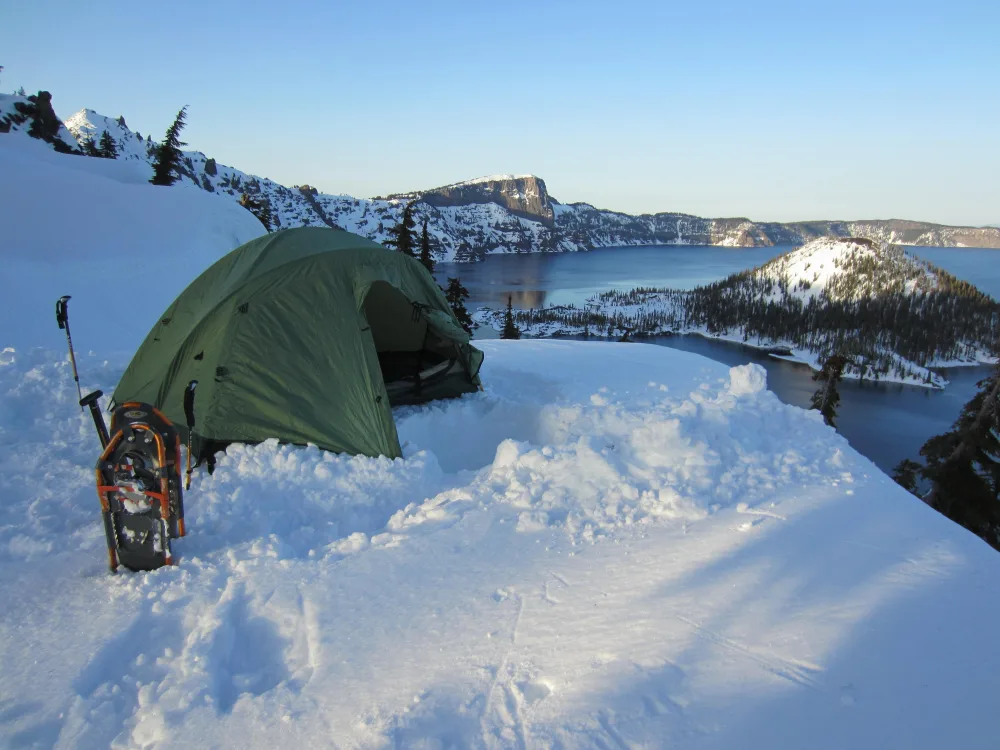
mwal12/Shutterstock
The cheapest time to visit Crater Lake is in the late spring or early fall, when there is slightly less demand from visitors. You can also find good deals on your trip in winter.
There are not that many accommodation options around the lake or in the park itself. The only hotel is Crater Lake Lodge, which is only open from mid-May to mid-October. Rooms are slightly discounted in May-June and September-October, when there are fewer people around.
Another option is to stay in one of the nearby towns. Hotels in nearby Klamath County tend to have discounts of about 20% compared to peak season prices.
Prices rise again slightly in winter as hotels attract skiers. Getting to Crater Lake costs less during the off-season for Oregon. There is no public transportation, so you will either have to drive your own car or rent it.
Car rentals are less expensive in early spring, which is Oregon’s off-season. If you have to fly to Portland before heading to Crater Lake, April, May, and October generally offer good deals, as do January and February.
However, the cost of visiting Crater Lake doesn’t vary as much depending on the season. Entrance fees are the same all year round.
Since there are fewer accommodation options, prices aren’t as affected by demand. Visiting during the off-season is a good idea if you want to avoid crowds, but not so much if you want to save money.
Least Busy Time to Visit Crater Lake
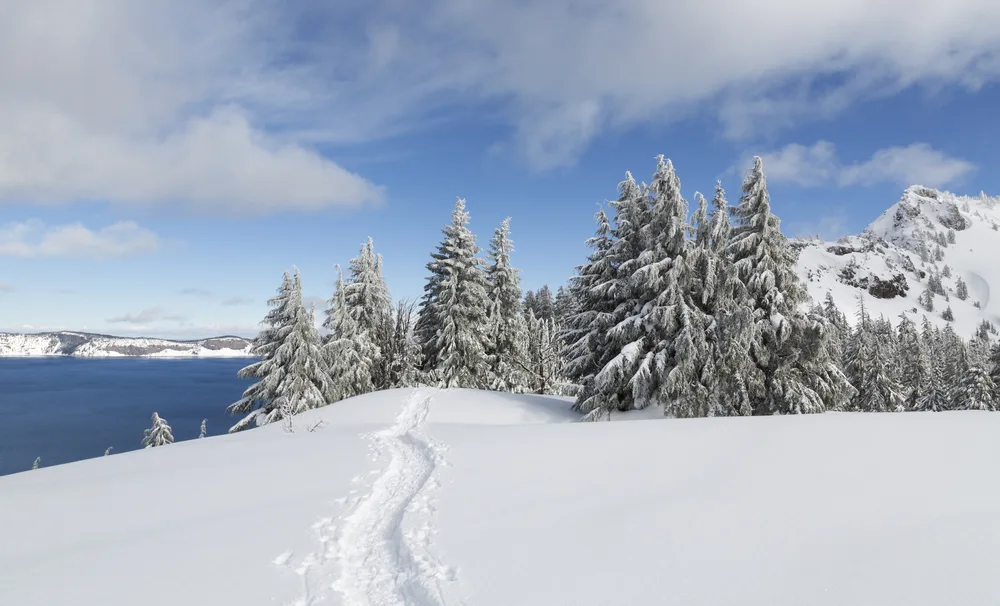
Sveta Imnadze/Shutterstock
The least busy time to visit Crater Lake is during the winter off-season, from late October to early June. During this time, most visitor centers, accommodation options, and food vendors are closed.
The Rim Drive is impassable due to snow, as are most hiking trails. This keeps most tourists away. Visiting in the winter requires a bit more preparation but allows you to see a completely different version of the park.
The scenery when Crater Lake is covered in snow is beautiful, and free of people compared to the summer crowds. Instead of hiking, you can explore the national park in a different way.
Winter activities include skiing, snowshoeing (sometimes on ranger-led tours), and snowmobiling. Plus, you can make snowmen and enjoy the amazing snowy landscape.
If you want to enjoy fewer crowds but still have warmer weather, September is a good month to visit. The weather is chillier than during the peak of summer, but there isn’t snow yet.
You can enjoy hiking and taking in the scenic views before the first snow of the season falls. September is the best month of the year for cyclists thanks to Ride the Rim, days when the scenic Rim Drive is closed to cars.
Worst Time to Visit Crater Lake
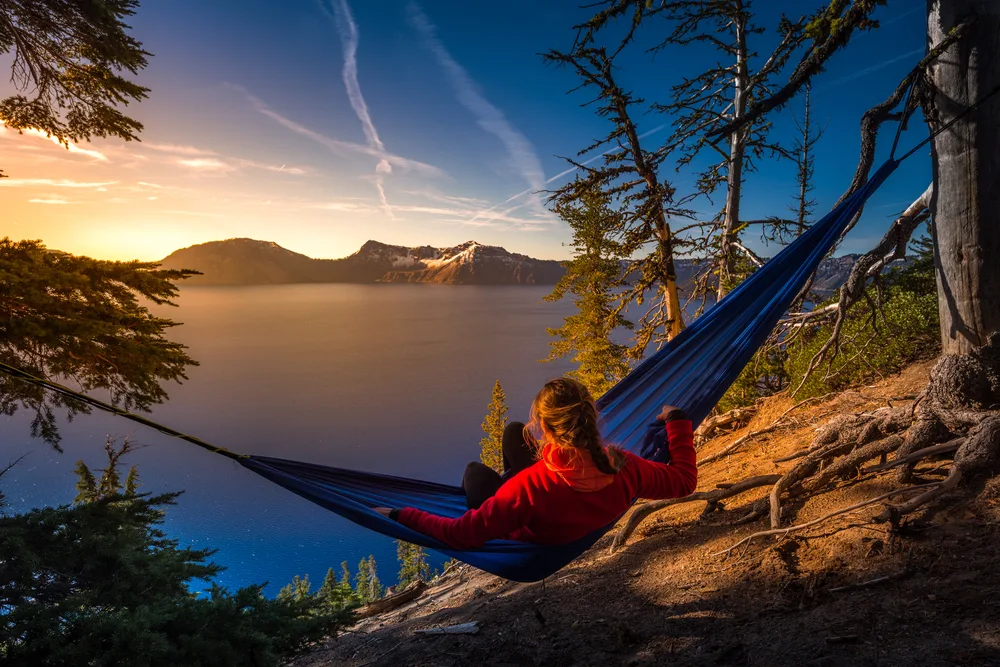
Kris Wiktor/Shutterstock
The worst time to visit Crater Lake is in May or June, which is an unpleasant transitional period for the weather in the area. May and June mark the beginning of summer in the rest of Oregon, but on Crater Lake many days still feel like winter.
There are snowstorms well into May, followed by days that are pleasantly sunny. It can be hard to prepare for what weather you might expect.
Since the snow is beginning to melt, you can’t reliably expect to go skiing or enjoy other adventurous winter activities. However, the snow hasn’t melted enough to free up hiking trails or even the Rim Drive, so you can’t enjoy summer activities either.
It’s a period of transition for the weather, but also for the park itself. Rangers stop offering guided snowshoe walks in mid-April, but other ranger programming doesn’t start up until late June.
That being said, May and June are a good time to visit if you want to be completely alone in the park, since winter usually brings some skiers. Accommodation options start opening up in mid-May, so overnight stays are possible again.
Crater Lake by Month: Climate & Activities
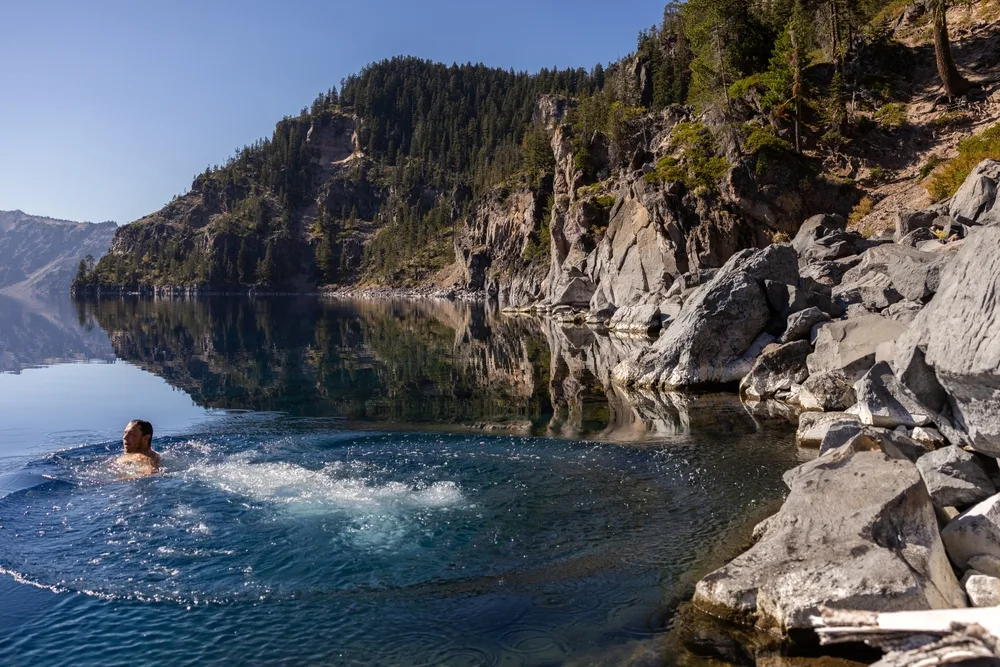
Wollertz/Shutterstock
Still unsure about the best time to visit Crater Lake? Take a look at our summary of the weather and climate by month below:
January
January in Crater Lake is cold and snowy, with temperatures ranging from 14 to 31°F (-10 to -1°C). This month is ideal for snowshoeing and cross-country skiing, enjoying ranger-led snowshoe walks, and experiencing the park’s serene winter beauty.
February
February continues with chilly weather, perfect for winter photography capturing the contrast of the deep blue lake against the snow, exploring the park on snowmobiles along designated routes, and enjoying the peacefulness of the winter season.
March
As spring approaches, temperatures in Crater Lake range from 19 to 39°F (-7 to 4°C). March is great for catching the last of the winter activities, observing the beginning of the thaw, and visiting the Steel Visitor Center for educational exhibits.
April
Spring temperatures in April range from 24 to 44°F (-4 to 7°C). It’s an ideal time for scenic drives as roads begin to open, witnessing the melting snow create beautiful waterfalls, and exploring the Rim Village.
May
May sees warmer temperatures from 32 to 57°F (0 to 14°C). Explore the hiking trails as they become accessible, enjoy the vibrant wildflower blooms, and experience the park’s diverse birdlife as migratory species return.
June
Summer arrives with temperatures between 40 to 69°F (4 to 21°C). June offers opportunities for fishing in the lake, hiking trails like Cleetwood Cove to access the lake shore, and enjoying the stunning views from Rim Drive.
July
July maintains warm temperatures from 48 to 77°F (9 to 25°C). It’s a popular month for boat tours on Crater Lake, stargazing during clear summer nights, and attending ranger-led talks and walks.
August
Temperatures in August range from 48 to 78°F (9 to 26°C). Visit the historic Crater Lake Lodge, enjoy swimming in designated areas of the lake, and explore the Pinnacles Overlook for unique geological formations.
September
As fall begins in September, Crater Lake’s temperatures range from 40 to 70°F (4 to 21°C). This time is perfect for enjoying the fall colors, hiking the park’s many trails with fewer crowds, and participating in the annual Ride the Rim days for cyclists.
October
October sees cooler temperatures from 31 to 59°F (-1 to 15°C). Enjoy the tranquil atmosphere of the park, explore the Rim Village Visitor Center, and experience the first snowfalls of the season.
November
Fall temperatures in November range from 22 to 44°F (-6 to 7°C). This month is ideal for quiet visits to the park, enjoying the early winter landscape, and spotting wildlife preparing for the winter.
December
Winter brings cooler temperatures ranging from 16 to 35°F (-9 to 2°C). December offers a peaceful experience of the park’s winter wonderland, opportunities for winter photography, and ranger-led snowshoe walks in a serene and snow-covered landscape.
Frequently Asked Questions
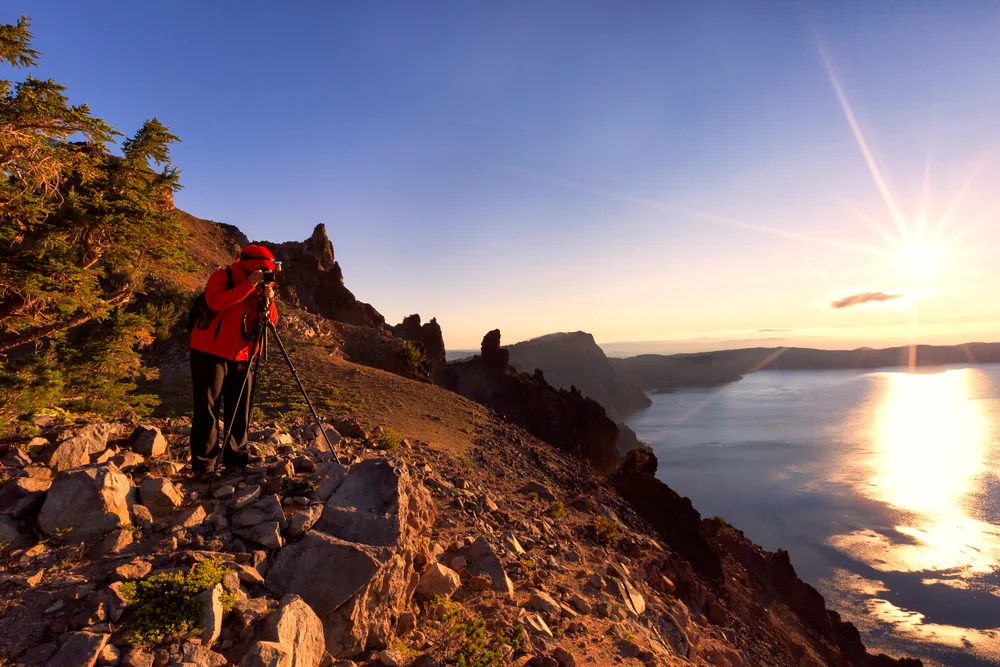
Bill45/Shutterstock
Here are some common questions people have asked about visiting Crater Lake.
When is the best time to visit Crater Lake?
The best time to visit Crater Lake is from July to September. These are the only months when most roads and trails are passable from the snow.
How many days do you need in Crater Lake?
You can see the highlights of Crater Lake in just one day. Passionate hikers will want to stay for two days to experience some of the trails.
In what months is Crater Lake open?
Crater Lake is open for the entire year. However, some visitor centers, accommodations, and restaurants are only open from May to October.
Is Crater Lake worth a day trip?
Crater Lake is worth a day trip because it is one of North America’s natural wonders. However, keep in mind that it is too far from most major cities to be a comfortable day trip.
Is it okay to swim in Crater Lake?
Yes, it is okay to swim in Crater Lake. However, you can only do so from certain beaches and during certain seasons. Some parts are too deep for safe swimming.
So, What’s the Best Time to Visit Crater Lake?
Crater Lake is at its best from July to September, when famous attractions such as the Rim Drive are accessible after the snow melts. However, if you want to go skiing or see the lake covered in snow, visit during the long winter.
So, with so much to see and do and plenty of amazing times to visit, what are you waiting for — book your trip today and experience for yourself all that Crater Lake has to offer. Happy travels!



